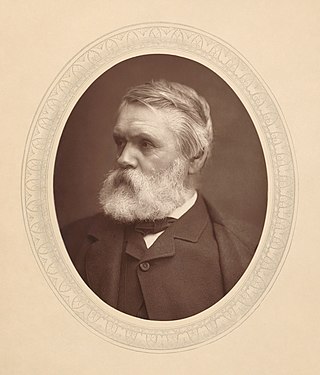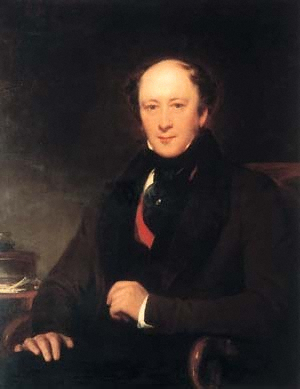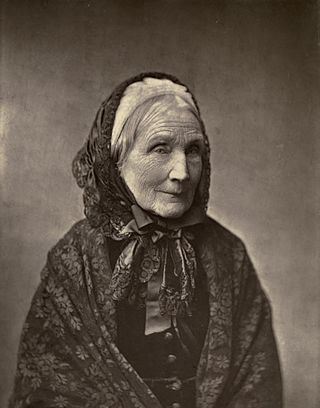
Thomas Love Peacock was an English novelist, poet, and official of the East India Company. He was a close friend of Percy Bysshe Shelley and they influenced each other's work. Peacock wrote satirical novels, each with the same basic setting: characters at a table discussing and criticising the philosophical opinions of the day.

Tom Taylor was an English dramatist, critic, biographer, public servant, and editor of Punch magazine. Taylor had a brief academic career, holding the professorship of English literature and language at University College, London in the 1840s, after which he practised law and became a civil servant. At the same time he became a journalist, most prominently as a contributor to, and eventually editor of, Punch, a humour magazine.

James Henry Leigh Hunt, best known as Leigh Hunt, was an English critic, essayist and poet.

Georg Gottfried Gervinus was a German literary and political historian.

George Payne Rainsford James, was an English novelist and historical writer, the son of a physician in London. He was for many years British Consul at various places in the United States and on the Continent. He held the honorary office of British Historiographer Royal during the last years of William IV's reign.

James Robinson Planché was a British dramatist, antiquary and officer of arms. Over a period of approximately 60 years he wrote, adapted, or collaborated on 176 plays in a wide range of genres including extravaganza, farce, comedy, burletta, melodrama and opera. Planché was responsible for introducing historically accurate costume into nineteenth century British theatre, and subsequently became an acknowledged expert on historical costume, publishing a number of works on the topic.

Samuel Carter Hall was an Irish-born Victorian journalist who is best known for his editorship of The Art Journal and for his much-satirised personality.
John Foster (1770–1843) was an English Baptist minister and essayist.

Mary Howitt was an English poet, the author of the famous poem The Spider and the Fly. She translated several tales by Hans Christian Andersen. Some of her works were written in conjunction with her husband, William Howitt. Many, in verse and prose, were intended for young people.
Eliza Lanesford Cushing was an American-Canadian dramatist, short story writer, and editor. The daughter of Hannah Webster Foster and sister of Harriet Vaughan Cheney, both novelists, she wrote a number of plays including Esther and The Fatal Ring, and edited Literary Garland, Canada's main literary magazine at the time.

Thomas ThomsonFRSE FSA Scot was a Scottish advocate, antiquarian and archivist who served as Principal Clerk of Session (1828–1852) and as secretary of the literary section of the Royal Society of Edinburgh (1812–20).

Edward Smedley (1788–1836) was an English clergyman known as a miscellaneous writer.
George Oliver (1781–1861) was an English Roman Catholic priest and a historian of Exeter, Devon, England, and its environs.
John Bowyer Nichols was an English printer and antiquary.
Sir George Kettilby Rickards was a political economist in England.

John Alfred Langford was an English journalist, poet and antiquary in Birmingham.

The Self-Condemned is an 1836 historical novel by the British writer Thomas Gaspey, published in three volumes by Richard Bentley in London. Set in Elizabethan Ireland, it was the first novel Gaspey had published since George Godfrey in 1828 due to his work on The Sunday Times. In a preface he acknowledged the assistance of the Irish antiquarian Thomas Crofton Croker for the historical background. The American edition was released by Harper and Brothers in New York. The principle characters are Edmund Nagle an Irish chieftain and his sister Grace, at the time of the Munster Plantation and Desmond Rebellion.












